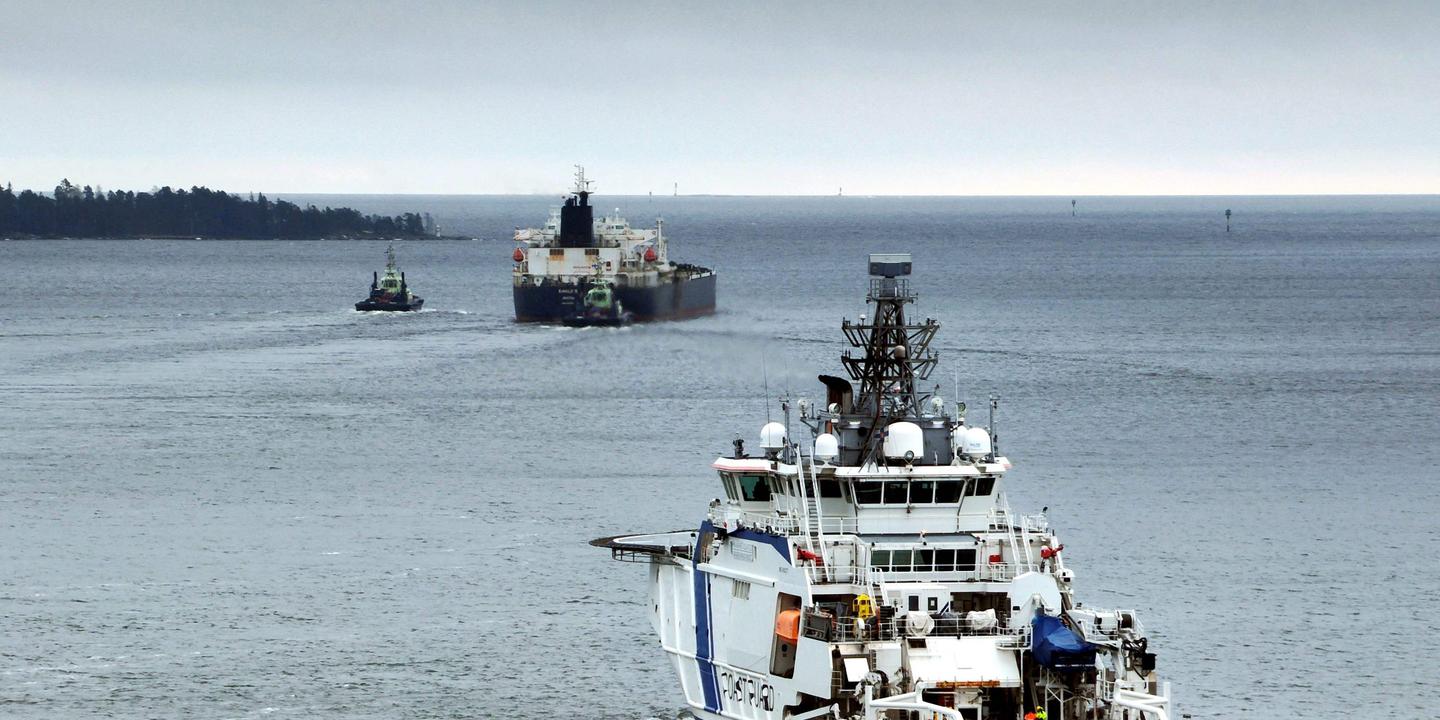
Suspected Russian ‘Ghost Fleet’ Tanker Allowed to Leave Finland After Damaging Undersea Cables
A tanker suspected of belonging to the Russian "ghost fleet," and implicated in the damage of five underwater cables in the Baltic Sea, has been granted permission to leave Finland. Finnish police announced the decision on Sunday, March 2nd, after the vessel had been detained in the country since late December.
"As the criminal investigation has progressed, there are no longer grounds to continue the seizure of the tanker," stated the police in a press release. The tanker, identified as the Eagle S, is currently located east of Helsinki, near the port city of Porvoo.
The Eagle S, flying the flag of the Cook Islands, is suspected of deliberately dragging its anchor for dozens of kilometers across the seabed on December 25th, 2024. This action allegedly resulted in damage to one electrical cable and four telecommunications cables. The anchor in question was recovered by the Swedish Navy in January.
The Finnish police suspect eight members of the ship’s crew of being involved in the damage. While the Eagle S has been released, three of these crew members are still prohibited from leaving Finnish territory. The investigation is ongoing, with police anticipating it will be completed by the end of April.
The incident has heightened concerns in Finland and Sweden, both of which recently joined NATO. These nations are particularly vigilant regarding incidents targeting energy and communication infrastructure in the Baltic Sea, a region that witnessed a surge in such events in late 2024.
Experts and political officials believe these actions are part of a "hybrid war" waged by Moscow against Western countries. The Baltic Sea is a strategic maritime space bordered by several NATO members and Russia, making it a potential arena for covert operations.
Since mid-January, NATO has increased its presence in the Baltic Sea to bolster the protection of its underwater infrastructure. The alliance recognizes the critical importance of these cables for communication, energy transmission, and overall security.
The Significance of the "Ghost Fleet"
The term "ghost fleet" refers to a network of aging tankers and other vessels suspected of being used by Russia to circumvent Western sanctions, particularly those imposed following the invasion of Ukraine. These ships often operate without proper insurance, maintain questionable safety standards, and engage in ship-to-ship transfers of oil at sea to conceal the origin of the cargo.
The alleged involvement of a "ghost fleet" tanker in the Baltic Sea cable damage raises serious questions about the potential for these vessels to be used for more than just sanctions evasion. The incident suggests a deliberate intent to disrupt critical infrastructure, adding a new dimension to the threat posed by this shadowy fleet.
Hybrid Warfare and the Baltic Sea
The accusation that the cable damage is part of a "hybrid war" strategy underscores the complex security environment in the Baltic Sea. Hybrid warfare encompasses a range of tactics that fall short of traditional military conflict, including cyberattacks, disinformation campaigns, economic coercion, and the sabotage of critical infrastructure.
The Baltic Sea is a particularly vulnerable region due to its strategic importance and the presence of numerous underwater pipelines and communication cables. These assets are vital for the economic prosperity and security of the surrounding countries, making them attractive targets for potential adversaries.
The Investigation and its Implications
The Finnish police investigation into the Eagle S incident is crucial for determining the precise circumstances of the cable damage and identifying those responsible. The investigation will likely involve:
- Analyzing the ship’s navigation data to reconstruct its movements on the day of the incident.
- Examining the anchor recovered by the Swedish Navy for any evidence of contact with the cables.
- Interviewing the ship’s crew to gather information about their activities and motivations.
- Cooperating with other countries, including Sweden and potentially NATO allies, to share information and expertise.
The outcome of the investigation could have significant implications for relations between Finland, Russia, and NATO. If it is determined that the damage was intentional and carried out on behalf of the Russian government, it could lead to further sanctions and a strengthening of NATO’s presence in the Baltic Sea.
NATO’s Response
NATO’s increased presence in the Baltic Sea demonstrates the alliance’s commitment to protecting critical infrastructure and deterring further acts of sabotage. The alliance is deploying additional warships, surveillance aircraft, and underwater drones to monitor the region and respond to any potential threats.
NATO is also working with its member states to improve the security of their underwater infrastructure, including strengthening surveillance, enhancing cybersecurity, and conducting regular exercises to practice responding to incidents.
The Broader Context
The Eagle S incident is just one example of the growing tensions in the Baltic Sea. The region has become a focal point of geopolitical competition between Russia and the West, with both sides vying for influence and control.
The ongoing war in Ukraine has further exacerbated these tensions, leading to increased military activity and a heightened risk of miscalculation. The incident serves as a stark reminder of the importance of maintaining vigilance and strengthening cooperation among NATO allies to ensure the security and stability of the Baltic Sea region.
The situation also highlights the need for greater international cooperation to address the challenges posed by "ghost fleets" and other illicit maritime activities. These vessels pose a threat not only to security but also to the environment and the safety of maritime navigation. Concerted action is needed to crack down on these operations and hold those responsible accountable.
